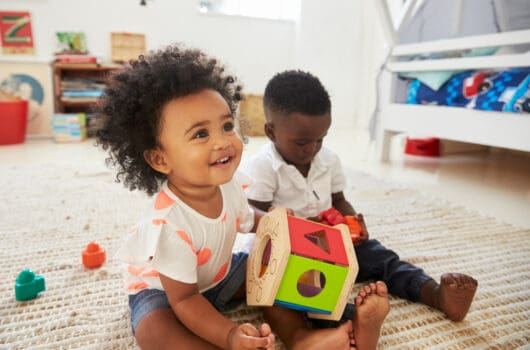Are the twos really so terrible? We’d like to think otherwise, especially when this age is the perfect time to start reading aloud with your little one. Not only can you kickstart your child’s literacy development by reading with them, but you can also teach them valuable emotional management skills that’ll help them successfully transition to a preschool environment in a couple of years’ time.
Everyone’s got their favorite books from childhood, with thousands of awesome stories and illustrations snugly tucked away in our memory banks. But did you know that some books might developmentally benefit your two-year-old more than others? Read on for some things to look for while browsing for your toddler’s next storytime adventure.
- What to Look for in Books for 2-Year-Olds
- Top 20 Best Books for 2-Year-Olds 2025
- 1. Best Overall Book for Two-Year-Olds: Brown Bear, Brown Bear, What Do You See?
- 2. Best Budget Pick: Chicka Chicka Boom Boom
- 3. Best Lift-the-Flap Book: Where’s Spot?
- 4. Best Premium Pick: See, Touch, Feel: A First Sensory Book
- 5. Best Bedtime Book: Goodnight Moon
- 6. Best Bilingual Book: Head, Shoulders, Knees and Toes
- 7. Best Potty Time Book: Sesame Street - Potty Time With Elmo
- 8. Best Touch-and-Feel Book: Pat the Bunny
- 9. Best First Vocabulary Book: First 100 Words
- 10. Best Interactive Coloring Book: My First Toddler Coloring Book
- 11. Best Childhood Classic: The Snowy Day
- 12. Best Book for Teaching Parts of the Body: Where Is Baby's Belly Button?
- 13. Best Opposites Book: Opposites, by Sandra Boynton
- 14. Best Story Collection: A Collection of Stories for 2 Year Olds
- 15. Best Fantasy Book: Corduroy
- 16. Best Book for Being Silly: Moo, Baa, La La La
- 17. Best Book About Animals: Baby Touch and Feel: Animals
- 18. Best Pop-up Book: The Wide-Mouthed Frog
- 19. Best STEM Books: Baby University Board Book Set
- 20. Best Book About Colors: You Are Light
- A Final Word Before We Turn the Page
What to Look for in Books for 2-Year-Olds
Not all children’s books are created equal; you’ll have to choose one that’s appropriate for your two-year-old according to how quickly they’re developing. Here are some things to keep in mind when shopping around for the next addition to your little one’s bookcase.
Design
Remember board books? These thick, paperboard children’s books have long been a staple in family bookshelves, and they continue to hold their own in the new millennium. Not only will you find stimulating stories and visuals in these children’s books, but their chunkier design makes it much easier for toddlers to handle and manipulate, which will improve their overall motor skills.
Some children’s books also incorporate different textures to help develop a child’s tactile perception, like Baby Touch and Feel: Animals by DK. These textures can include different types of fabrics, like wood, metal, velcro, or plastic, to name a few. What’s more, some books have interactive buttons that repeat various recorded sounds and phrases when your toddler pushes them, such as the Sesame Street Potty Time with Elmo by Phoenix International Publications.
In short, a well-designed children’s book should simultaneously stimulate many areas of a little one’s brain so that it nurtures their growth and fosters their physical and neural development.
Language
Most babies start saying their first words anywhere between 12 to 15 months. By 18 months, many toddlers begin stringing simple phrases together as they get better at using language to communicate. To cultivate these budding language acquisition and recognition skills, look for children’s books with repetitive sounds, words and phrases, and rhymes that correspond with the story’s text and illustrations or photos. We love Chicka Chicka Boom Boom by Bill Martin Jr. for this exact reason; the visuals closely follow the text, making it easier for your toddler’s brain to make that audiovisual connection.
Books with nursery rhymes or popular folk tales are great choices for toddlers, like A Collection of Stories for 2-Year-Olds, by Parragon Press. Not only are the rhymes and songs fun to sing, but they’ll teach your child the rhythm and cadence of English. Furthermore, rhymes and songs are great mnemonic devices for teaching your toddler new vocabulary and will give them a leg up on their reading skills once they start school.
Keep in mind, though, that toddlers’ attention spans are endearingly (or exhaustingly, depending on the time of day) short. Try to pick books with short, simple sentences that introduce new vocabulary and phrases throughout the story. However, there’s certainly no harm in reading them stories with language that’s just a bit beyond their reach, as any exposure to language is still beneficial.
Content
Even the most colorful and stimulating board book out there won’t do anything for your child if the inner contents are about, let’s say, how to change a car muffler. The content of a book’s story itself can impact your child’s emotional development. That’s why choosing age-appropriate stories with lively characters, predictable plots, and valuable moral lessons will not only teach your toddler right from wrong, but it may even influence their budding social skills, with many children’s books teaching children the importance of healthy conflict management.
Books with cause and effect plotlines, like Corduroy by Don Freeman, are great for toddlers, too. They’re at the age where they’re just beginning to learn that their actions have real-world consequences. These types of storylines also reinforce object permanence and help develop your little one’s problem-solving abilities.
If you have a particularly rambunctious youngster, consider a bedtime book, or at the very least, a story with a plot centered on getting ready for bed, going to bed, and/or sleeping. One of our all-time favorites is Goodnight Moon by Margaret Wise Brown, as its quiet story is accompanied by colorful, soothing illustrations. Reading with your child before bedtime can help them settle down and jumpstart melatonin production so that both of you can drift off quickly and soundly.
But what if your child learns so quickly that they’re starting to get bored and restless during storytime? Try reading books that introduce higher-level concepts to them, such as STEM. Believe it or not, we have a pick for that, too: The Four Science Board Books for Babies by Chris Ferrie.
Readability
Last but not least, the readability of a children’s book is crucial, as it’s usually a window into how much fun you’ll have with your child as you read it together. If a children’s book gives you opportunities to use silly voices, pause dramatically, or play up the emotions in the story, then you’re bound to have an entertaining storytime.
Encourage your child’s autonomy by letting them decide where to sit while you read and if they want to be the one to turn the book’s pages or not. Discussing the book’s characters and plot line is another opportunity for your child to sharpen their linguistic abilities in addition to reading the book itself.
A 2008 research study confirms these findings, with the Archives of Disease in Childhood stating that “reading aloud to young children, particularly in an engaging manner, promotes emerging literacy and language development and supports the relationship between child and parent.” So not only is reading aloud a nice, big brain boost for your baby, but it can further strengthen your emotional bond with them, which is necessary for a child’s healthy development.
Our reviews include these books’ different interactive features, genres, and the type of language used, so you can see if a particular book in question is what you’re looking for. And now, onto the reviews! Also, If you’re looking for other toys and gifts for your little one, make sure to check out our lists of the best toys and gifts for two-year-old boys and two-year-old girls.
Top 20 Best Books for 2-Year-Olds 2025
1. Best Overall Book for Two-Year-Olds: Brown Bear, Brown Bear, What Do You See?
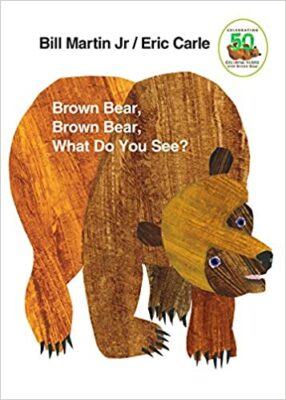
Editor’s Rating:
Quick Facts
- Interactive features: Bright, colorful patterns; Picasso-informed art style; thick paperboard material
- Language: Short, repetitive rhymes referencing colors and animals
- Genre: Animals
Gen X-ers and millennials alike remember growing up with Eric Carle’s playful, eclectic art style, and little ones today are sure to fall in love with it as well. Originally released in 1967, Brown Bear, Brown Bear, What Do You See? stands the test of time with its simplistic rhymes referencing different animals and their colors.
Anyone familiar with Carle’s art style knows he loves bright, snappy colors and eye-catching patterns that look like they’re jumping off the page. That being said, what this book lacks in tactile stimuli, it makes up for in spades with its visual stimuli. The animals’ designs are reminiscent of Picasso, whose blocky renderings of the world around him seamlessly blended the real and surreal.
Pros
- Parents can bond with their children over this shared childhood favorite
- Simple, repetitive rhymes that demonstrate the cadence and rhythm of American English
- Bright colors
- Elaborate patterns and animal design is visually stimulating
Cons
- No tactile stimulation
2. Best Budget Pick: Chicka Chicka Boom Boom
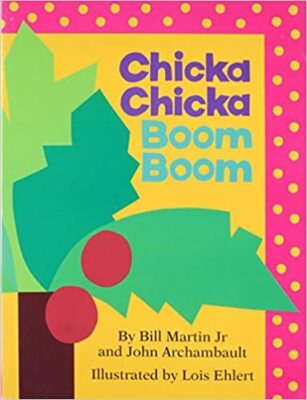
Editor’s Rating:
Quick Facts
- Interactive features: Bright colors; simplistic, blocky shapes; thick paperboard material
- Language: Infectious, repetitive, jump rope-style rhymes
- Genre: ABCs
Chicka Chicka Boom Boom is another beloved children’s classic, and its alphabet-themed plot makes it perfect for little ones just learning their ABCs. The distinctive, schoolyard rhymes are reminiscent of jump rope chants, making this book just as entertaining for your toddler as it was for you.
Not only does this book introduce the alphabet to young readers, but it also introduces the concept of cause and effect, boosting its readability factor. The climax of the story comes when all the letters scramble to the top of the coconut tree and cause it to topple over. Here you can play up the theatrics a little and lament the tree’s fall as a way to show your child that actions have consequences. If you’ve got a musical streak, you can even use this book to teach tempo and rhythm, as the rhymes are short, simple, and sticky.
However, for as great as this book is to teach your child the alphabet, it can also be confusing for that same reason. The letters are not clearly marked, so the burden of pointing out the letters and reinforcing the audiovisual connection between the letters and their sounds may be a bit challenging. Moreover, parents looking to intellectually stimulate their toddlers may find the repetitive, nonsensical rhymes to be a bit inane and even grating after awhile.
Pros
- Beloved by young parents and young kids alike--a classic children’s book for over 30 years
- Fun, creative way to introduce to alphabet to your child
- Bright colors and stimulating art style
- Schoolyard-style rhymes are fun to read and easy to remember
- Introduces the concept of cause and effect
Cons
- Some parents find the rhymes to be a bit mindless for their taste
- Does not clearly label the different letters, which can confuse some young readers
3. Best Lift-the-Flap Book: Where’s Spot?
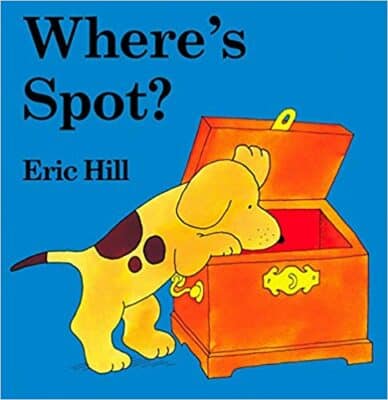
Editor’s Rating:
Quick Facts
- Interactive features: Large, thick pages for easy handling; flaps that lift to reveal where Spot is hiding; thick paperboard material
- Language: Simple “Where is…?” questions
- Genre: Lift-the-flap
Spot the Dog has been a household name for 40 years now, as this classic children’s book first debuted in 1980. Even though its original intended audience has long since grown up and had children of their own, the book’s popularity has carried over well into the 21st century. Where’s Spot? is one of the original lift-the-flap board books that have helped children develop their spatial awareness and teach them how to ask for something or someone’s whereabouts.
However, what is perhaps the best thing about this book is not the engaging, interactive flaps, but the conversational opportunities this book provides you and your child. Asking and repeating the questions in your book help develop your child’s social and language acquisition skills and also teaches them how to answer these questions correctly. Any children’s book that gets you and your toddler talking is certainly one to keep in the playroom.
If your kid is a bit ahead of the curve intellectually speaking, though, then this book might be a bit under stimulating and even downright boring. Toddlers with more advanced language skills would be better off learning new vocabulary or more sophisticated grammar patterns, rather than simple questions regarding location.
Pros
- Spot the Dog is a beloved childhood favorite of parents and tots alike
- Lift-the-flap-style pages contextualizes the new vocabulary and phrases in the book
- Offers ample opportunities to talk with your toddler (e.g. “Where’s Spot? Is he under the bed?)
- Bright colors and round angles are stimulating and visually appealing to your little one
Cons
- May be rather ho-hum for more developmentally advanced toddlers
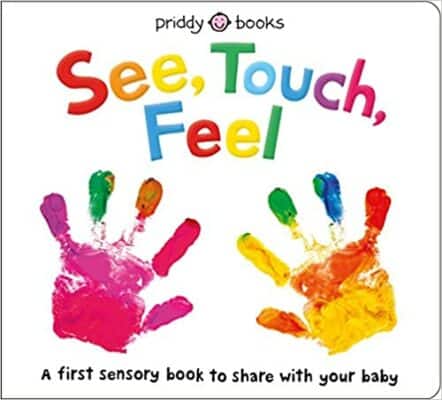
Editor’s Rating:
Quick Facts
- Interactive features: Different textures, finger trails, a mirror, a drum; thick paperboard material
- Language: Short, simple rhyming sentences
- Genre: The five senses
Our premium pick comes decked out with a bevy of sensory bells and whistles: photos of happy, smiling babies alternate pages filled with stimulating sights, sounds, and textures. Not only are these different sensory stimuli excellent for your toddler’s development, but you could also potentially inspire a natural curiosity in them.
What’s more, the simple, rhyming sentences help reinforce the concepts introduced in the book. Little ones will learn new sensory vocabulary while simultaneously giving them context–and texture!
However, the binding of some of the copies may be a bit weak and actually fall apart. Unless you have a three-ring binder on hand to transfer the pages to, you may be left with a mess of loose pages if the binding does happen to break.
Pros
- Lots of different interactive sensory stimuli
- Simple, rhyming language helps reinforce sensory concepts introduced in the book
- New sensory vocabulary
Cons
- Binding on the book is weak on some copies
5. Best Bedtime Book: Goodnight Moon
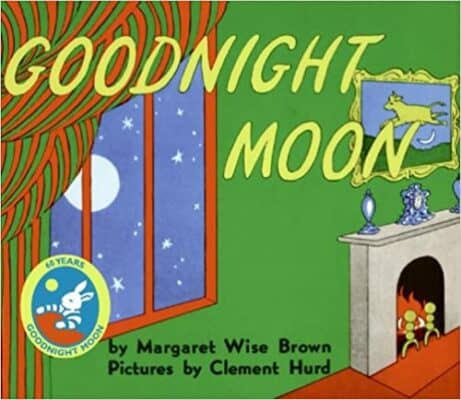
Editor’s Rating:
Quick Facts
- Interactive features: Rich colors; soothing, detailed illustrations; thick paperboard material
- Language: Short, simple rhyming sentences and phrases
- Genre: Bedtime
First published in 1947, this book is another multi-generational favorite. Not only is this book relaxing to read, but it also provides a great opportunity to instill a love of structure in your little one. Teach your children new vocabulary and phrases related to bedtime routines with the help of soothing, colorful visuals. Its short, simple, and repetitive phrasing is also pretty easy for most toddlers to understand.
Reading a book before bedtime may even create a sort of Pavlovian response over time; your toddler may come to associate a bedtime story with falling asleep, which will help them relax and drift off more quickly. A free, all-natural, and edifying way to get your kid to go to bed? Sounds like a dream–pun intended!
If your toddler needs a lot of stimulation, though, then you may discover that this book is relatively lacking in interactive features. Colorful, detailed illustrations might be enough for some tots, but others may need additional tactile or audiovisual stimuli.
Pros
- Teaches tots new vocabulary and concepts related to bedtime routines
- Reading to your child before bed may help them fall asleep quicker and more easily over time
- Rich, soothing illustrations simultaneously engage and relax your toddler
Cons
- Lacks a variety of sensory stimuli to keep more restless children engaged
6. Best Bilingual Book: Head, Shoulders, Knees and Toes
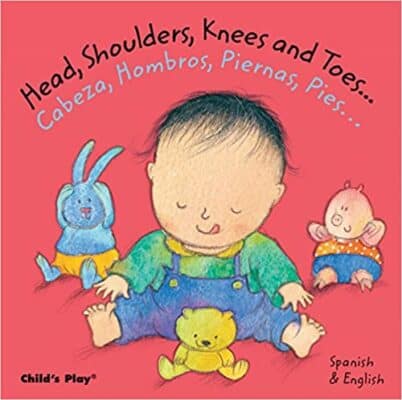
Editor’s Rating:
Quick Facts
- Interactive features: Bright colors; large pages; thick paperboard material
- Language: Vocabulary for different parts of the body in both English and Spanish, nursery rhymes (i.e., ‘Head, Shoulders, Knees, and Toes’)
- Genre: The human body
If you’re looking for a book that’ll teach your child a popular nursery rhyme in two languages, you can stop here. This book is perfect for parents looking to ramp up their children’s language acquisition skills, especially in a second language. What’s more, the melody, cadence, and rhythm of the song will help forge linguistic neural pathways in your toddler’s brain even faster, so they can sing along in no time flat.
One important thing to note is that the Spanish version of the song is not a direct translation, so it might rankle native Spanish speakers a bit. The reason for this though, is that the translation was adjusted to fit the melody of the original English version, so you might have to get creative and improvise a mini-dance demonstrating the differences between the two versions.
Pros
- Features body part vocabulary in both English and Spanish
- Introducing a second language to your toddler may accelerate cognitive development
- Large, colorful pictures to help cement the audiovisual connection
- Toddlers can learn how to sing ‘Head, Shoulders, Knees, and Toes’
Cons
- The Spanish version is not a direct translation and may be confusing to some
7. Best Potty Time Book: Sesame Street - Potty Time With Elmo
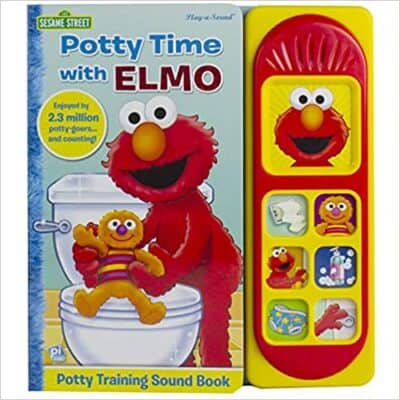
Editor’s Rating:
Quick Facts
- Interactive features: Sound button board featuring seven different Play-a-Sound buttons
- Language: Short, simple sentences
- Genre: Potty time
This board book’s interactive sound buttons will bring potty time to a whole new dimension. With seven different sounds to choose from, toddlers can start learning about the potty process and the different noises they’ll hear throughout it. These engaging buttons will hold your tot’s attention as they learn to use the bathroom by themselves. Young readers will see the button icons peppered throughout the story, which prompts them to press the buttons to hear the sound that corresponds with that particular part of the story.
However, there’s one little caveat to keep in mind with this book: none of the illustrations depict Elmo sitting on the toilet, which could be slightly detrimental to more visual learners. How can a book teach a concept without visually demonstrating it? For this reason, you might need to get a little creative when it comes time to show your little one how to actually use the potty.
Pros
- Seven engaging sound buttons that feature bathroom noises
- A great interactive tool for introducing toilet training to your tot
- Big, thick pages are easy for little hands to manipulate
- Elmo is a fun and familiar character to many two-year-olds
Cons
- No illustrations of Elmo on the toilet, which may not be helpful for reinforcing new concepts for visual learners
8. Best Touch-and-Feel Book: Pat the Bunny
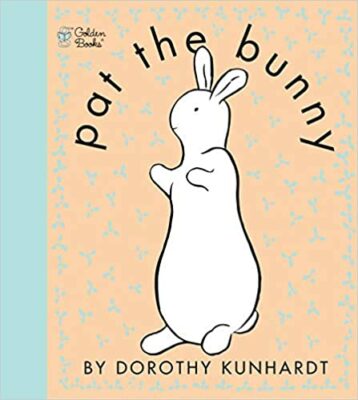
Editor’s Rating:
Quick Facts
- Interactive features: Different texture, like flaps, mirrors, finger trails; soft, pastel colors
- Language: Short, simple, repetitive sentences
- Genre: Nature/Family
Pat the Bunny has been a staple in American children’s literature for an astounding 80 years, with its first edition released in 1940. The bright, pastel colors are complemented by the array of different tactile sensations, making this book a universally stimulating experience for your toddler.
The language in the book is designed so that first the characters perform the action, and then the book directly prompts the reader to perform the same action. This linguistic repetition helps reinforce the new words and phrases introduced in the book.
However, the design of the book is a little lacking; instead of thick, sturdy paperboard material to hold the book together, the pages are bound by plastic binder clips. This means that pages can bend or even rip out over time if the book isn’t handled gently. If you’re looking for a touch-and-feel board book that is less likely to fall apart with repeated use, we recommend Baby Touch and Feel: Animals by DK.
Pros
- Lots of interactive tactile stimuli to engage little hands and minds
- Soft, pastel colors are aesthetically pleasing
- Simple, repetitive language teaches children about following commands
Cons
- Design of the book is a bit flimsy
9. Best First Vocabulary Book: First 100 Words
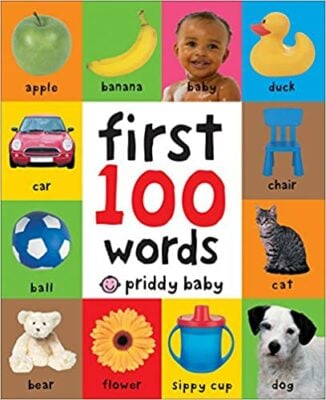
Editor’s Rating:
Quick Facts
- Interactive features: Bright colors; soft, padded cover; large, clear photographs
- Language: Vocabulary words
- Genre: Dictionary
Teach your toddler concrete words and concepts with this big, delightfully colorful, and soft-to-the-touch dictionary. Not only are the photos fun to look at, but they help reinforce language acquisition and recognition. What’s more, the vocabulary in the book are largely everyday objects that your child frequently sees and interacts with, including fruit, animals, and household items.
Some words may be a little confusing, though. For example, on one page there is ‘ball,’ while a couple pages later there is ‘blue ball.’ Explaining these concepts may be a little confusing to your tot when they’re first learning new vocabulary, so bear these inconsistencies in mind when purchasing this book.
Pros
- Dozens of common, everyday vocabulary words
- Bright, colorful photos reinforce the audiovisual connection
- Soft, padded cover and size of book make it easy for toddlers to handle
Cons
- Some vocabulary words/concepts may be confusing (e.g., ‘ball’ vs. ‘blue ball’)
10. Best Interactive Coloring Book: My First Toddler Coloring Book
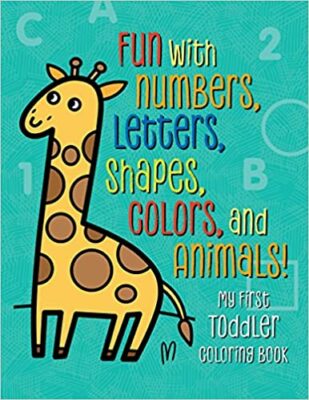
Editor’s Rating:
Quick Facts
- Interactive features: Bold-lined, engaging depictions of animals, numbers, letters, and shapes
- Language: Basic vocabulary words (i.e., numbers, shapes, colors, animals, etc.)
- Genre: Educational
Disguise learning as fun with this highly interactive coloring book; not only will your child absorb essential vocabulary words and concepts related to the world around them, but they can simultaneously flex their budding creativity and autonomy by choosing their own colors. The cartoon depictions themselves are not only eye-catchingly cute, but their thick, bold lines are perfect for toddlers who are just starting to hone their fine motor skills while coloring.
One minor design flaw may become a bit irksome over time, though. The spine of the book itself is a little flimsy, so the book may not stay on the page you’re coloring. A good remedy for this is to remove the pages and place them in a coil binder; this lets your toddler focus less on working to keep the book open and more on the coloring itself.
Pros
- A two-for-one special: let your child color as they learn new words and concepts
- Bold lines help toddlers both stay in the lines while coloring and fine-tune their motor skills
- Cute, inviting cartoon depictions of animals, numbers, letters, and shapes will keep your tot entertained
Cons
- The book’s spine may cause it to shut or turn the page involuntarily
11. Best Childhood Classic: The Snowy Day

Editor’s Rating:
Quick Facts
- Interactive features: Bright, punchy colors; engaging patterns; thick, paperboard material
- Language: Longer, non-rhyming sentences
- Genre: Nature
Not every book you read to your tot has to be an educational Trojan Horse; some books you read to your kids simply because you love them, too. The Snowy Day by Ezra Jack Keats is one such book. Originally released in 1962, this book was a landmark for the representation of children of color in children’s literature. Since then, it has only grown in popularity as parents continue to introduce this beloved childhood story of theirs to their own children.
But if your M.O. is linguistically stimulating your child with short, repetitive sentences, then this book may not be for you. As great as the story is, the language is a bit beyond most toddlers–even though the book is written for very young children. Nevertheless, there’s no denying that any time spent reading aloud with your child is indeed time well spent.
Pros
- A multi-generational children’s classic
- Bright, engaging colors, patterns, and overall art style
- Board book style makes the book easy for children to handle
Cons
- The language is a bit advanced for most two-year-olds

Editor’s Rating:
Quick Facts
- Interactive features: Bright, colorful illustrations; engaging flaps that reveal different parts of the body underneath; thick paperboard material
- Language: Short, simple, repetitive sentences and questions
- Genre: The human body
Here’s another engaging, interactive lift-the-flap book that will not only keep your child entertained, but will also introduce them to different parts of the body and new sentence and grammar patterns. The brightly colored, baby-friendly illustrations visually stimulate your toddler while prompting them to lift the flaps throughout the story. It might look like your little one is just having fun, when really he or she is fine-tuning their language recognition and motor skills at the same time.
However, this book is a bit on the weaker side in terms of design. Even though it’s a board book by definition, the pages are relatively thin–making them harder for your toddler to handle. If your tot is content to let you hold the books while you two read together, then this won’t be much of an issue. If they’re more hands-on in that regard, though, then you may want to opt for a book that’s a bit sturdier.
Pros
- Bright colors and cute illustrations visually engage your tot
- Interactive flaps help refine your child’s language recognition and motor skills
Cons
- Book is a bit thin and hard for little ones to handle
13. Best Opposites Book: Opposites, by Sandra Boynton
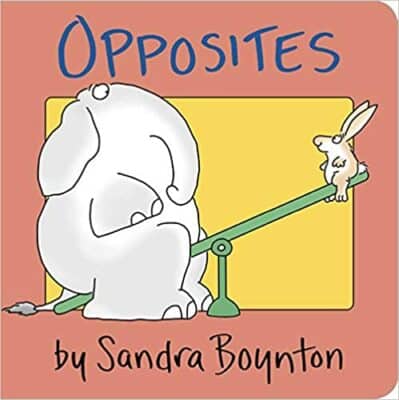
Editor’s Rating:
Quick Facts
- Interactive features: Brightly colored, cartoonish illustrations; thick paperboard material
- Language: Opposites vocabulary (e.g., fast/slow, big/small, etc.)
- Genre: Opposites
Two is a great age to start teaching your little one about opposites, and this is definitely the book to do it. Like Boynton’s other children’s books, Opposites is another easy-to-handle board book christened with her trademark art style: wacky, pastel-colored animals that accompany the new words in the book.
The opposites themselves are paired in rhymes, presenting a fun opportunity to get creative with your reading voice. Act out the meanings of the words themselves by modulating the volume or tone of your voice and watch your toddler dissolve into giggles. This extra attention to story delivery is another way to develop your child’s language acquisition and recognition skills.
One thing that could be better, though, is how the concepts are presented in the illustrations. For example, the illustrations for right and wrong depict two pigs: the ‘right’ one is seen talking into a telephone while the ‘wrong’ one has the receiver on top of its head. Adults can easily make sense of this, but it might be difficult trying to explain to a two-year-old why this is wrong, per se. Taking this extra time to explain the meanings behind some of the illustrations might ultimately detract from the story itself, and your toddler may even disengage.
Pros
- Boynton’s bright, pastel-colored animal characters have been a hit with toddlers for decades
- Introduces over a dozen useful opposite pairs
- Ample opportunity to demonstrate the concepts in the book by modulating the tone and volume of your voice
Cons
- Some of the illustrations used to contrast the meanings are confusing
14. Best Story Collection: A Collection of Stories for 2 Year Olds

Editor’s Rating:
Quick Facts
- Interactive features: Colorful, engaging illustrations; bigger book size for easy handling
- Language: Nursery rhymes and fairy tales
- Genre: Fantasy
Nursery rhymes and fairy tales aren’t just favorites among families–they’re cultural strongholds in the English-speaking world. This lovely story collection of ten classic nursery rhymes and fairy tales is an indispensable addition to your toddler’s bookshelf. There’s no better time to introduce your little one to the songs and stories that his or her community grew up listening to, so why wait?
Well, one reason to hold off is that this book’s design isn’t completely toddler friendly. The book’s hard cover and bigger size help toddlers handle it from the outside, but the pages within are thin and could tear easily if your tot is naturally restless. For this reason, we recommend parents of more energetic tots to go with something more durable, like a thick board book.
Pros
- Great selection of ten classic nursery rhymes and fairy tales
- Cute and colorful illustrations
- Hard cover and large size of book make for easy handling on the outside
Cons
- Pages are thin and can tear easily if children aren’t careful
15. Best Fantasy Book: Corduroy
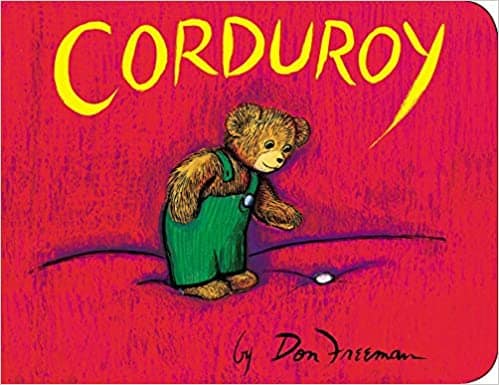
Editor’s Rating:
Quick Facts
- Interactive features: Colorful, engaging illustrations; thick paperboard material
- Language: Longer, more descriptive sentences
- Genre: Fantasy
Originally released in 1968, Corduroy has since spawned a number of sequels, two television series, and even a short film. Clearly, the teddy bear decked out in green corduroy overalls is a hit with kids, and we bet that it’ll be the same with your child. Corduroy’s nighttime mall adventure will not only jumpstart your toddler’s imagination, but his antics will teach your child that consequences have actions.
But even though this book is geared towards children who are preschool age and under, the language is surprisingly advanced, and may even be beyond your toddler’s level. Unfortunately, this book does not offer much in the way of short, simple, repetitive sentences or rhymes, so it’s not the best book for boosting language acquisition and recognition skills. However, your child may take a shine to this book if they enjoy other books with relatively advanced language, like The Snowy Day, by Ezra Jack Keats.
Pros
- Another classic children’s fantasy book
- Children will learn cause and effect through Corduroy’s actions in the story
- Thick paperboard material makes the book ideal for little hands
Cons
- Language is a bit advanced for most toddlers (i.e., longer, more descriptive sentences)
16. Best Book for Being Silly: Moo, Baa, La La La
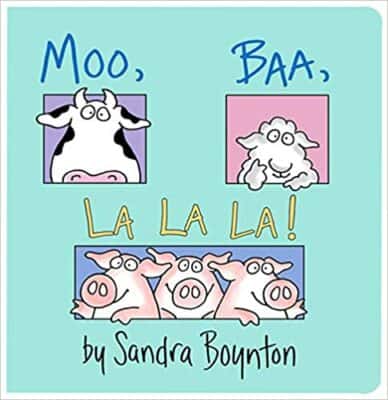
Editor’s Rating:
Quick Facts
- Interactive features: Bright, pastel colors; Boynton’s signature wacky animal characters; thick paperboard material
- Language: Animal sounds; short, rhyming phrases and sentences
- Genre: Animals
Boynton’s propensity for silliness shines in this charming, easy-to-handle board book. Bark, meow, moo, and laugh along with your child as they learn different animal sounds. Much like The Snowy Day by Ezra Jack Keats, this book is another example that proves children’s books don’t always have to pack an educational punch–sometimes, the sentimental value or silliness factor is enough. Boynton’s darling art style lends the colorful pastel animals an offbeat charm that continues to visually stimulate little brains. What’s more, the language in this book is pretty simple: short sentences and clever rhymes that will engage your toddler’s language recognition skills.
Beyond the animal sounds and overall silly factor, though, there’s not much more to this book. If you’re looking for material that’s a bit more educational, then you won’t find it here.
Pros
- Colorful, engaging animal characters in Boynton’s signature wacky style
- Silly animal sounds that will get your toddler giggling
- Short, simple rhymes develop your child’s language recognition skills
Cons
- Not much educational value
17. Best Book About Animals: Baby Touch and Feel: Animals
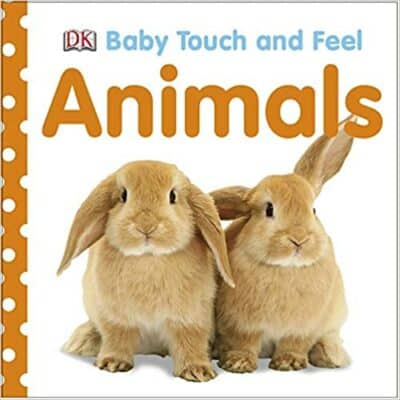
Editor’s Rating:
Quick Facts
- Interactive features: Soft textures, sparkly photos; soft, padded cover; thick paperboard material
- Language: Animal vocabulary and sounds
- Genre: Animals
Here’s another touch-and-feel book that gently engages your toddler with soft, inviting textures; teach your toddler what a puppy’s belly, a butterfly’s wings, or a penguin’s fur feels like. This sturdy board book encourages play and learning both with these tactile stimuli and bright, inviting photos of adorable baby animals.
For as lovely as the textures in this book are, though, they’re not terribly varied. You won’t have an opportunity to teach the words and concepts related to other textures, like rough, smooth, or bumpy, for instance. If you’re in the market for a touch-and-feel book that features a wider variety of textures, though, then go with See, Touch, Feel- A First Sensory Book instead.
Pros
- Soft, padded cover and soft textures inside are very toddler-friendly
- Different tactile stimuli engage your tot and reinforce new vocabulary and concepts
Cons
- Not a wide variety of textures
18. Best Pop-up Book: The Wide-Mouthed Frog

Editor’s Rating:
Quick Facts
- Interactive features: Bright, sunny colors; big pop-up pages; large book size for easy handling
- Language: Longer, more descriptive sentences
- Genre: Animals
Millennial parents fondly remember growing up with this delightful pop-up book, and many have since introduced this story to their own children. Toddlers will love learning the story of a hungry frog with a wide, wide mouth, and the big pop-up cutouts do an excellent job of demonstrating concepts like hunger, eating, and the different foods that animals eat. From beginning to end, this book is full of surprises–both 2D and 3D alike.
But that may be one reason why some tots don’t take to this book; the 3D pop-up images are a bit overwhelming for more sensitive children, and some might even be frightened by the animals in the book. What’s more, the language is a bit advanced for two-year-olds, so it may not be ideal as a tool for developing their language acquisition and recognition skills.
Last but not least, this is not a board book, so the pages and pop-up images are more likely to tear if handled roughly. If you’re looking to read a book about animals with a particularly rambunctious tot, you might want to choose a durable and stimulating board book, like Baby Touch-and-Feel.
Pros
- Bright, sunny colors
- Engaging pop-up images that bring the story to life
Cons
- Pop-up images may frighten some children
- Language is a bit advanced for most two-year-olds
- Pages and pop-up images tear easily if handled roughly
19. Best STEM Books: Baby University Board Book Set
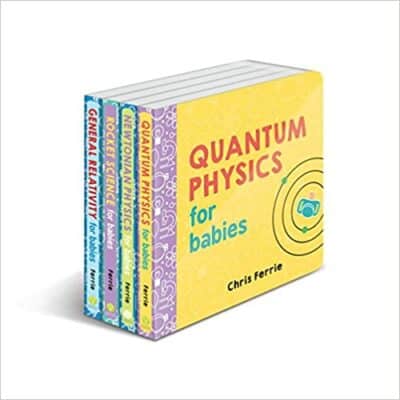
Editor’s Rating:
Quick Facts
- Interactive features: Brightly colored, simple pictures; thick paperboard material
- Language: Short, simple sentences; basic physics vocabulary (e.g., proton, neutron, electron, etc.)
- Genre: Physics
Quantum physics is a highly abstract field of science that’s difficult for most adults to understand, let alone babies and toddlers. Surprisingly, though, this book does an excellent job at breaking down these difficult ideas into simple, easily digestible ideas. Certain sentences are repeated throughout the book (i.e., “This is a ball.”) to reinforce new vocabulary and concepts, thereby developing your toddler’s language acquisition and recognition skills.
If your toddler is a fast learner, then there’s certainly no harm in introducing this book to them. You may even be surprised as to how much of the information they end up retaining. In a time where STEM-centered education is growing exponentially in popularity, it may even be prudent to introduce these concepts to your toddler at such an early age.
However, this book is ultimately for the parents. Even though children will generally parrot whatever you feed their brains, it’s almost impossible for them to make full sense of these abstract ideas when they’re still just getting a grasp on the concrete world around them. Nevertheless, there’s plenty to be said for trying to instill a natural curiosity and a love of science in your little one from an early age.
Pros
- A great book to introduce STEM concepts at a very early age
- Does a pretty good job of boiling abstract physics concepts down to a toddler-friendly format
- Bright colors and simple lines are visually engaging
Cons
- Quantum physics is beyond the grasp of most two-year-olds
20. Best Book About Colors: You Are Light
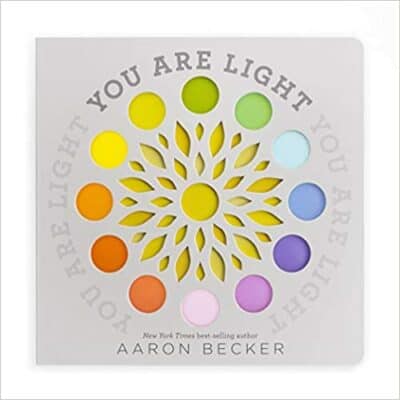
Editor’s Rating:
Quick Facts
- Interactive features: Intricate, die-cut patterns; colored circles in a rainbow pattern
- Language: Short, rhythmic, rhyming sentences
- Genre: Nature
In addition to the heartwarming moral that every person has intrinsic value, the die-cut patterns and colorful, “stained glass” circles are perfect for little paws. As you read aloud with your child, they can interact with the patterns in the book and learn new concepts, like the difference between rough and smooth, as well as the colors of the rainbow.
Some people may not enjoy the minimalist nature of this book, though. While it does have lovely colors and uplifting language, its imagery is relatively plain, and may even be a bit too abstract for toddlers to grasp. What’s more, while the language is simple and repetitive enough for your budding language learner, there isn’t much of a plot to develop, which may not be great if you’re looking to develop your child’s emotional management or problem-solving skills.
If you’re interested in a book that will help cultivate both of these things in your toddler, choose a classic fairy tale, like the ones found in A Collection of Stories for 2 Year Olds, by Parragon Press. It’s hard to compete with the traditional morals these age-old stories teach our children.
Pros
- Beautiful rainbow colors are pleasing and soothing
- Intricate, die-cut patterns stimulate both the eye and ear
- Wholesome, emotional message: “you are worth it”
Cons
- Abstract, minimalist imagery does a poor job of reinforcing new vocabulary and concepts
- Not much plot development
A Final Word Before We Turn the Page
You might believe most things go over your two-year-old’s head, but they’re paying closer attention than you think. So why not fill their little brains with silly, funny stories that teach them important words, concepts, and lessons? We’re confident that any book on this list would do just that. But reading aloud with your little one isn’t just a great educational opportunity–it’s also invaluable quality time you can spend with your child that’ll create some truly cherished memories.
